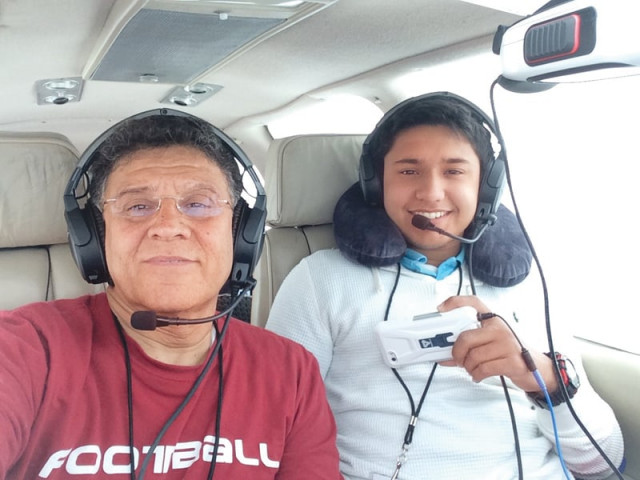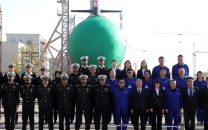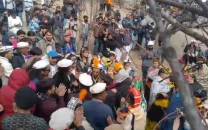Father-son tragedy: Search continues day after crash
Cause of the incident is still unknown; family rules out weather to be a reason.

The search and rescue team, after a brief break, resumed their search at 6 am Samoa Standard Time, Hans Langkild, the director of Homeland Security Territorial Emergency Management told the media. “After finding debris of the wreckage, the team is now searching for the airplane’s black box,” he added.
Meanwhile, Terry Williams, the public relations officer at the National Transportation Safety Board’s (NTSB) Central Regional Office, said the American Coast Guard were operating in the area where the single engine jet crashed. “The investigations are going to ascertain the cause of the incident,” he told The Express Tribune. The US Coast Guard spokesperson, Petty Officer Melissa McKenzie, told the local media that a plane would aid in the search for Babar Suleman whose body is still missing. There is no information about the condition or status of the aircraft.
American media is pointing out that the weather was not good. However, Babar’s family insisted that the weather was not the reason behind the crash. “My father would not have let Haris take off if the weather was bad,” said Hiba Suleman.
Both pilots were wearing “gumby” suits that would help them survive a water landing, she said, adding that her father and brother had taken a course to survive a crash in the ocean.
Their plane had been stocked with relief equipment life rafts, and gumby suits for ocean survival.
Haris’s body was found soon after the arrival of the rescue boat sent from the island’s Fire and Crash service. There was an active locator beacon working but no information as to whether it was attached to Haris’s lifejacket or not.
Mian Washim, a Pakistani-American businessman and a close friend of the Suleman family, said, “There was no indication as to why the crash happened.” It is very unlikely they had reached an altitude that enabled them to contact the Air Traffic Control in Samoa, he said.
“The area [where the plane crashed] is in the New Zealand SAR region and it was the New Zealand SAR that received a distress signal from the aircraft. The timing of the signal (possibly a satellite ping) put it very close to the crash site when transmitted.”
The Citizens Foundation (TCF) said it is in a state of shock. A statement quoted the CEO Syed Asaad Ayub Ahmad saying, “These were two courageous and passionate people, who embarked on this amazing journey to raise awareness about the plight of the less-privileged and to raise funds to support the cause. Their efforts, enthusiasm and commitment will always be cherished.”
Published in The Express Tribune, July 25th, 2014.



















COMMENTS
Comments are moderated and generally will be posted if they are on-topic and not abusive.
For more information, please see our Comments FAQ